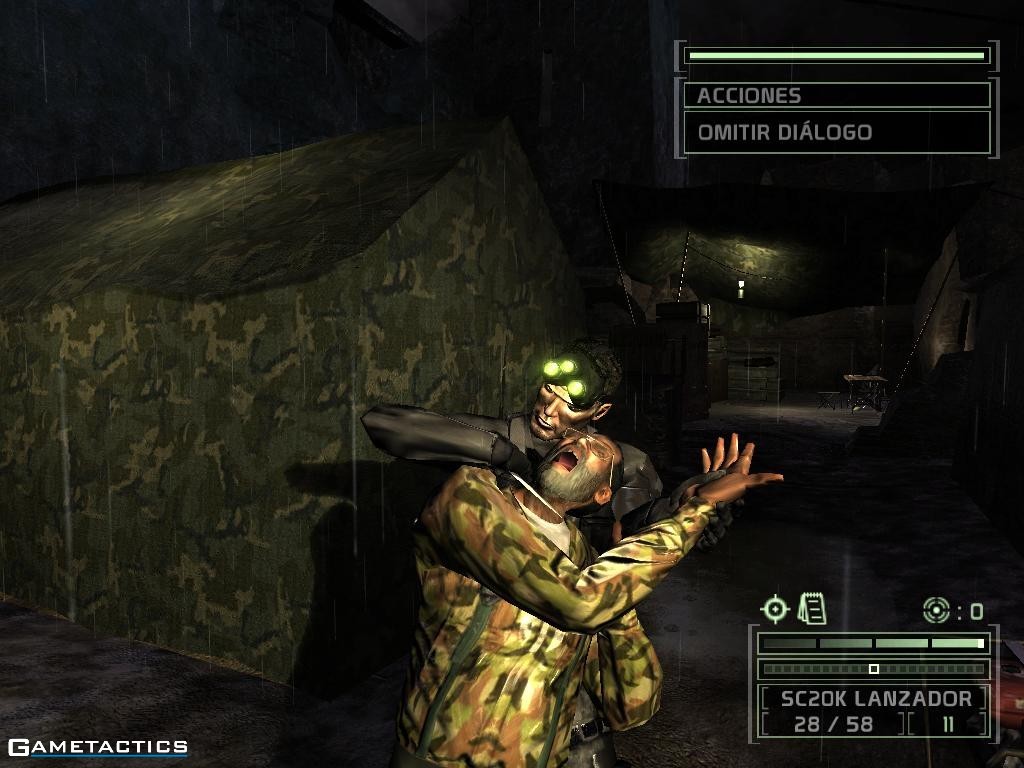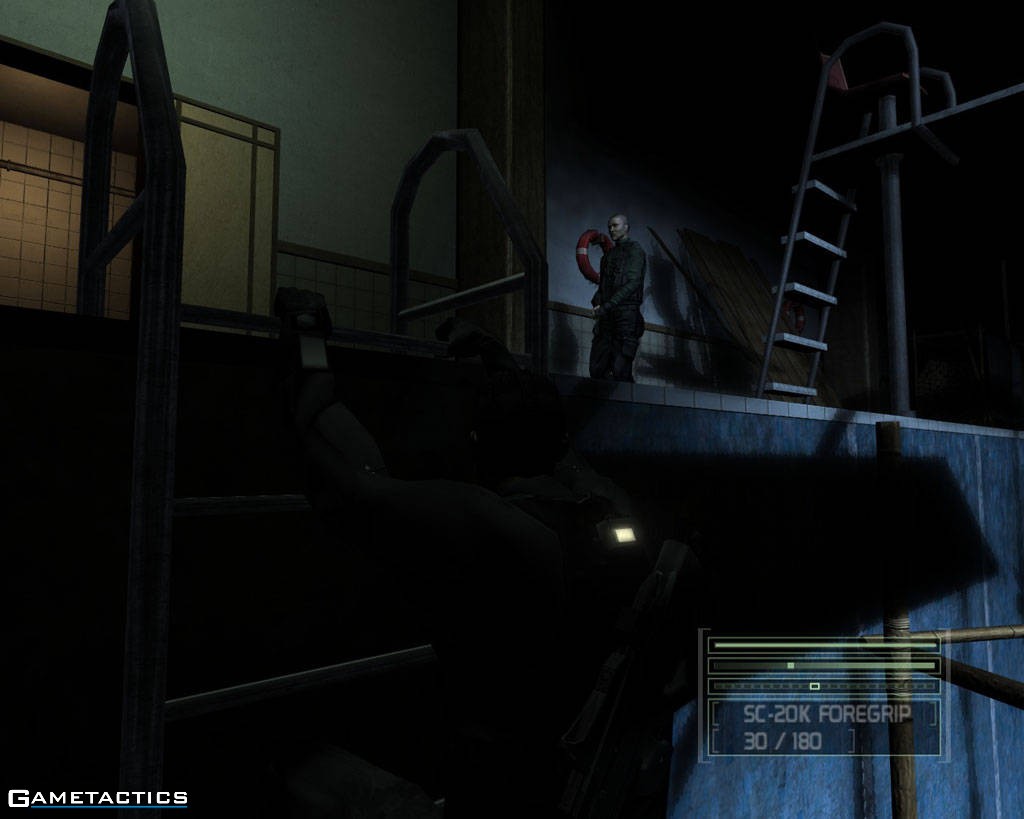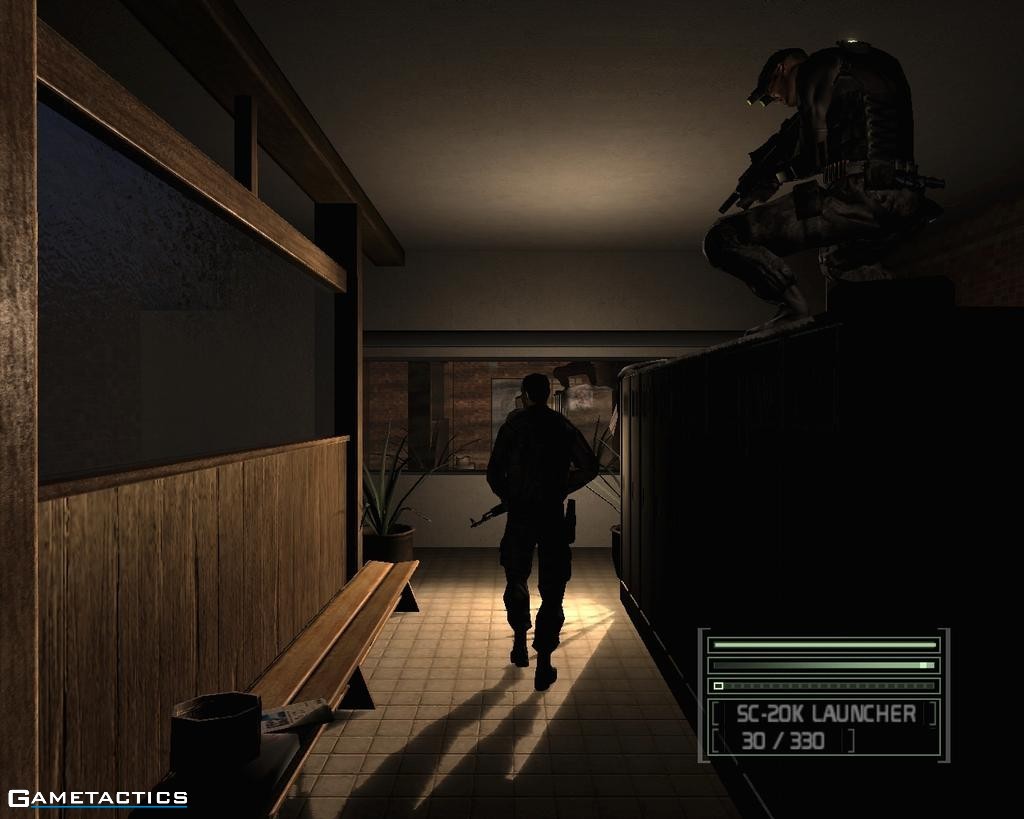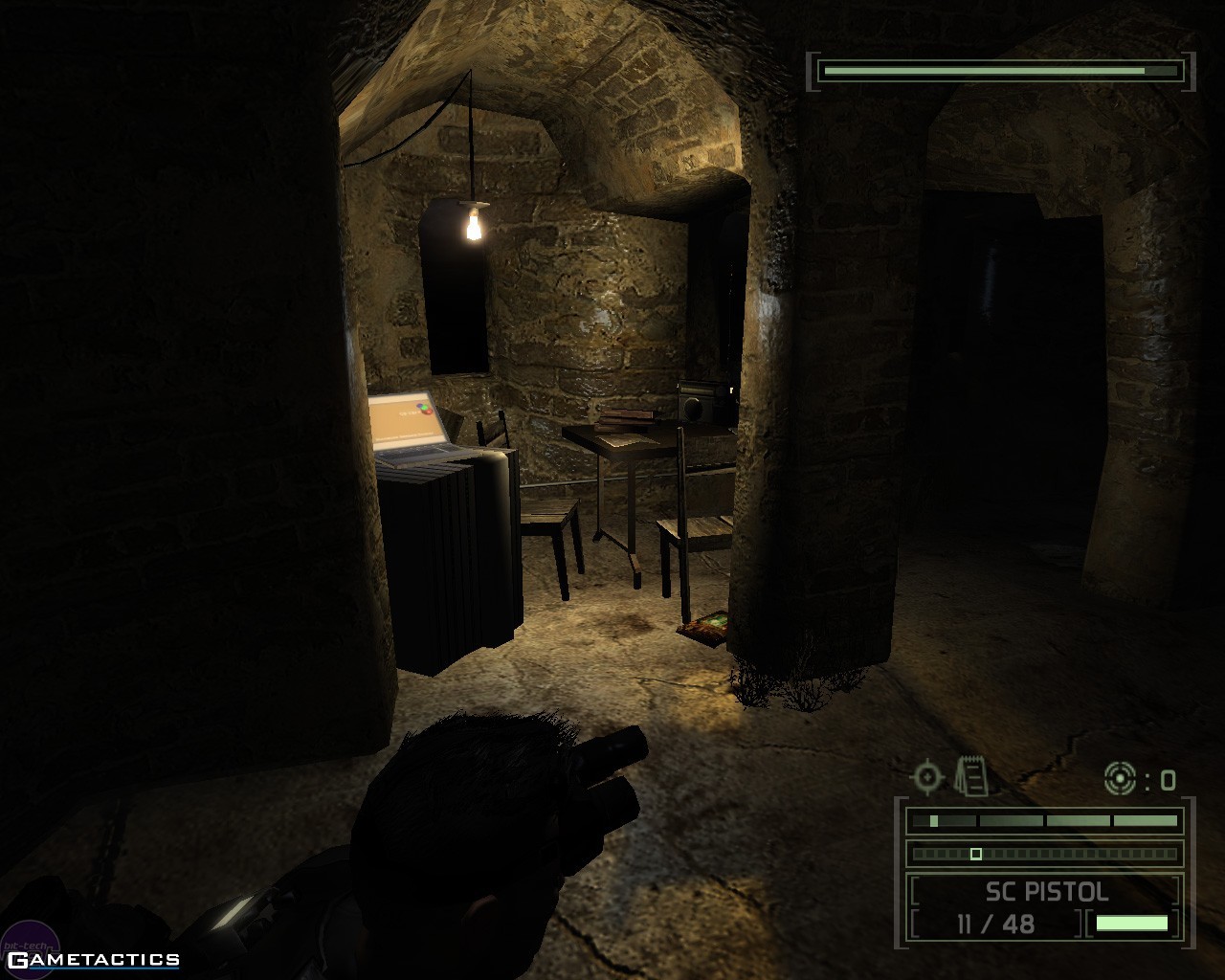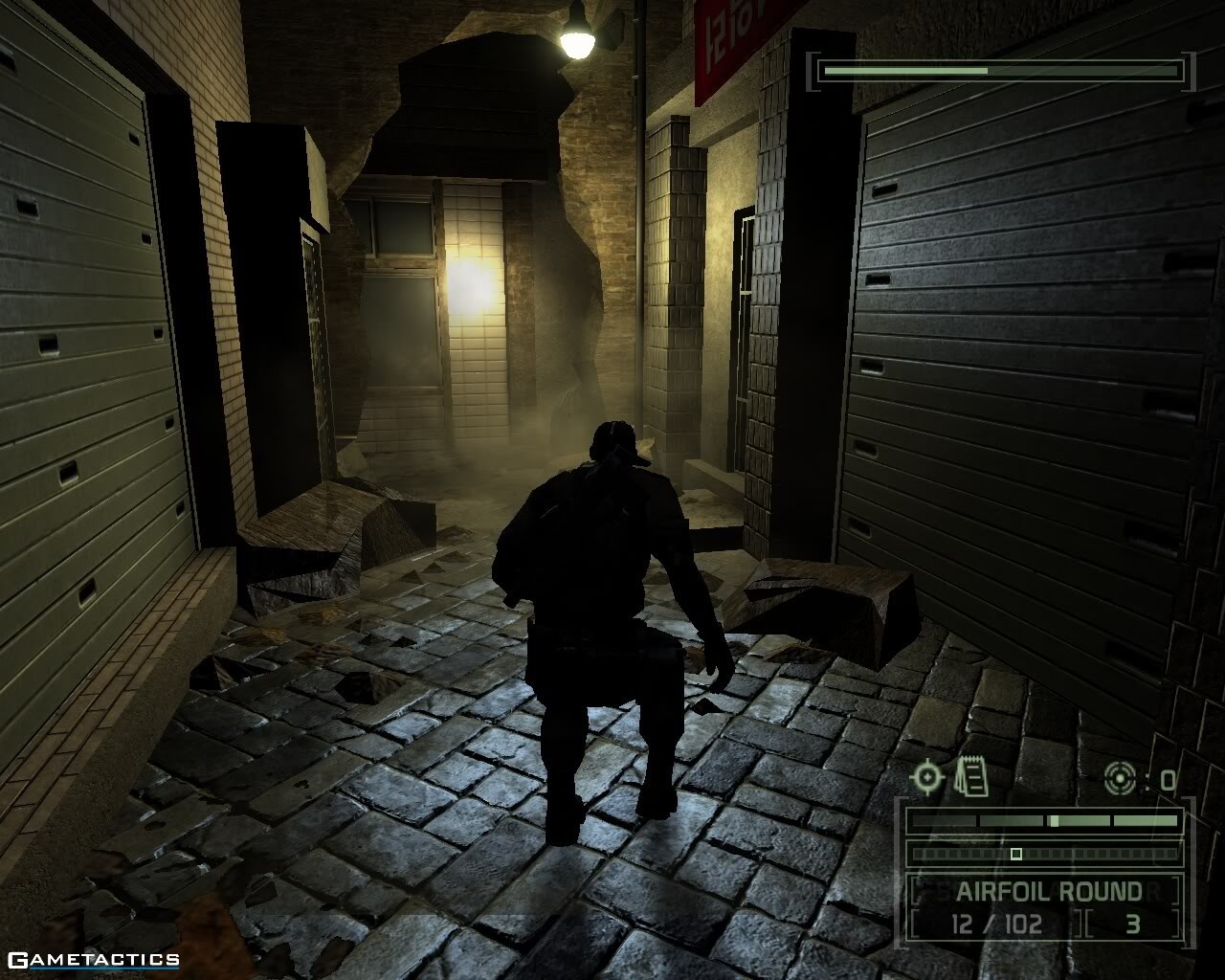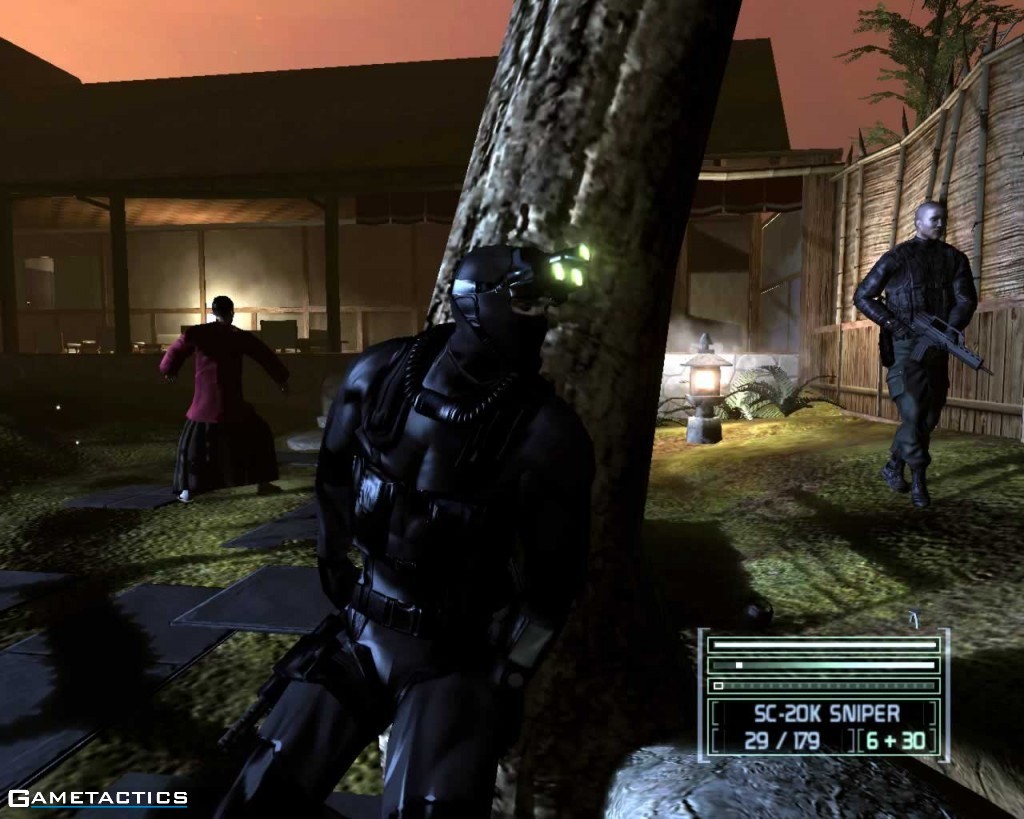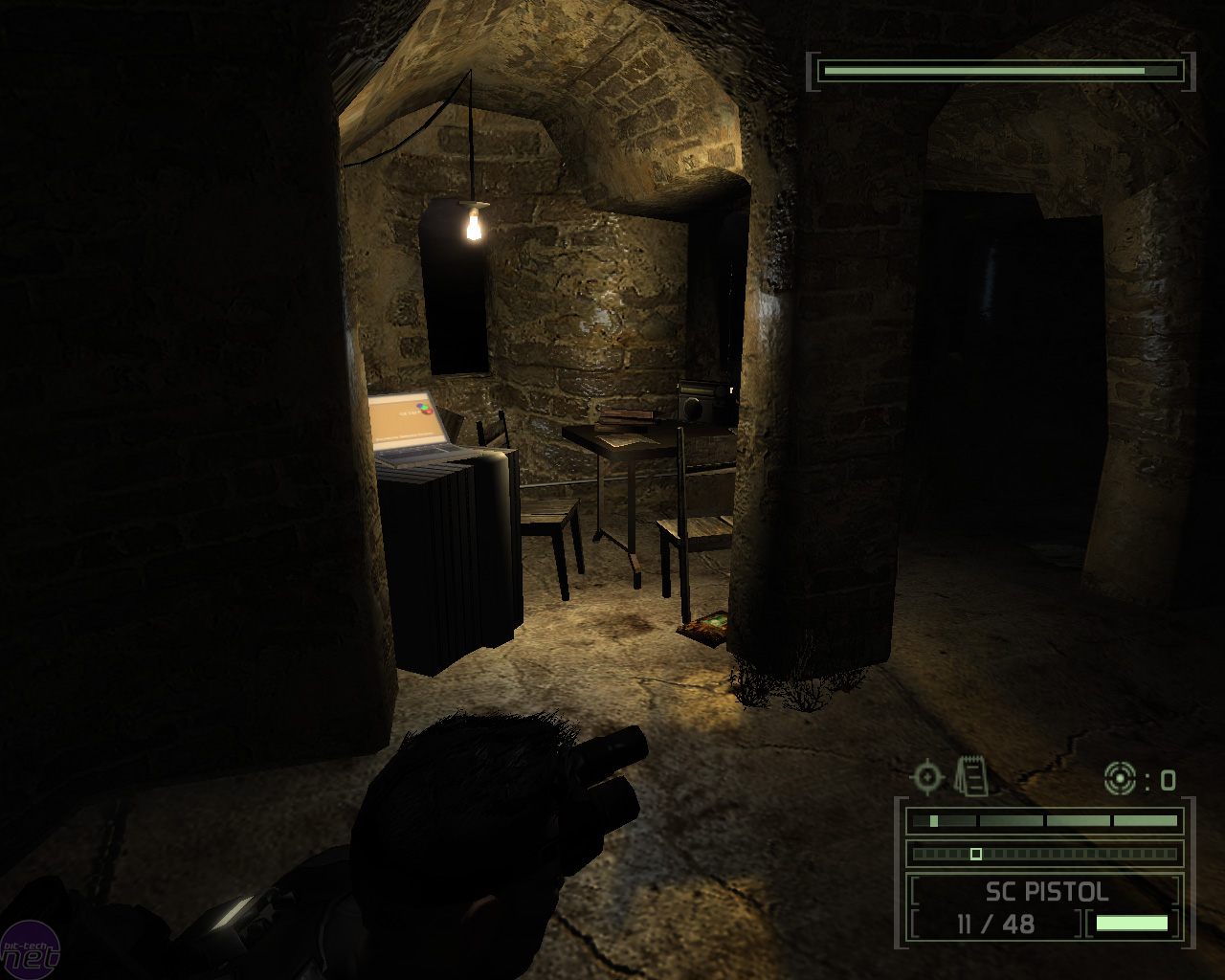 Looking for something to play this holiday season? Reviewer Aaron Jean takes a look back at Splinter Cell: Chaos Theory, available on the PlayStation 3 exclusively in HD on the PSN Store, the regular versions are also on the Xbox 360 in XBLA store and of course for Windows PC via Steam.
Looking for something to play this holiday season? Reviewer Aaron Jean takes a look back at Splinter Cell: Chaos Theory, available on the PlayStation 3 exclusively in HD on the PSN Store, the regular versions are also on the Xbox 360 in XBLA store and of course for Windows PC via Steam.
Splinter Cell: Chaos Theory was the first M-rated game I ever played. Granted, the ratings board wouldn’t have donned such a rating today, but it’s one that feels somehow deserving. It’s not a “mature” game in the sense that it’s full of obscenity and violence, but it is a mature game in the sense that it feels real. Gritty, poignant, and visceral.
It’s still essentially an accepted fact among Splinter Cell fans that Ubisoft Montreal’s Chaos Theory is the finest game in the series. 2006’s Double Agent was the first attempt to make Sam Fisher’s story more character-driven, taking the series in a very different direction. A commendable attempt, yes, and a mostly successful one, but in taking away Sam’s signature stealth suit and putting him in broad daylight, Ubisoft put away much of the darkness and grittiness that made Chaos Theory feel so real.
Chaos Theory’s formula improved on the original games in almost every way. More powerful melee attacks, more varied acrobatic attacks, better animations, and more open-ended level design. There were plenty of features that refined past elements, making Chaos Theory the epitome of classic Splinter Cell games. But beyond the great level design, higher production values, and gritty realism, the game’s greatest achievement was its lighting system. More than likely, I could write an entire article about Chaos Theory’s lighting. In terms of mood-setting lighting, the only possible rival would be S.T.A.L.K.E.R.: Shadow of Chernobyl. Moonlit ship’s decks fully capture the atmosphere of a cold night at sea, the soft halogen glow of a hanging light sways in the wind of a stormy night, and an enemy’s (real-time) shadow is the perfect place for Sam to trail him before grabbing him from behind.
The graphics, for 2005, couldn’t have been better. In fact, the game won several awards for best graphics that year. The game’s sound and music were equally phenomenal, even though they were eclipsed by such powerhouses as God of War, Shadow of the Colossus, and Battlefield 2. The soundtrack was not only Amon Tobin’s rise to fame (he also later went on to work on Infamous), but also a fantastic compliment to the gameplay, combining fast, tense drum loops with edgy bass and guitar sounds that dynamically layer according to in-game events. Chaos Theory’s soundtrack was sublime; so synchronous to the setting and mood that it still stands as one of gaming’s best and most singular soundtracks.
Not to say that all aspects of the game were perfect. Sometimes, the game’s writing didn’t seem to take itself as seriously as it probably should have – references to ninjas, a bad pun about a red herring, and videogame-related humour stuck out in a story that’s supposed to be based in reality. The main drawbacks in the game were those that broke immersion, actually, with guards that mysteriously seem to know English, and moments where the soundtrack breaks in to alert you about nearby guards. These faults are all common to stealth games, and while they do break the fourth wall in many cases, the game is so successful at making its environments believable that it’s easy to forgive these few shortcomings.
As far as stealth games go, Chaos Theory was probably the most realistic and immersive one in its time. Some would (and still do) argue that the Metal Gear Solid series is superior, but most agree that Splinter Cell: Chaos Theory is the more realistic game. Chaos Theory should be remembered as a remarkable package that comes together to immerse you into the character of a superspy, doing so better than any other game can boast. It’s also a part of the more recent PS3-exclusive Splinter Cell HD Collection, but you should forget about the first two Splinter Cells – this is the one you want. All of its elements hold up beautifully today, and at only $15 on the Playstation Network, it’s something worth picking up simply for its unique single-player experience.
What did you think of Splinter Cell: Chaos Theory? Did you enjoy its more open-ended design approach, or did you prefer Metal Gear Solid’s brand of storytelling? Is it a classic, or is it better left in the past?

